Inbox and Environment News: Issue 388
December 16, 2018 - January 12, 2019: Issue 388
Pittwater's Environment 2018: The Good, The Bad, The Ugly
The Good: The hundreds of Bush Care Volunteers who persist in restoring our bush areas and ridding them of weeds to create habitat for local fauna. PLUS: the Community coming together to try and save the remnant of Littoral rainforest atop Newport Hill and have it added into the Crown of the Hill to the sea Reserve systems and walking trails.
The Bad: The encroachment of the Sydney Northn Planning Panel on Pittwater LEPs by downgrading that in place to allow developments at Crystal Bay and along the creek-line at Warriewood. PLUS: the persistence of faeces in the State of the Beaches report at Station Beach on the estuary.
The Ugly: The Continued Rape of Warriewood Protected Plant species and wetlands areas by Developers. The vanishing treeline.
Environment Around Us 2018 Good, Bad And Ugly
The Good: The persistence of citizens demanding their right to protect that which cannot speak for itself, whether in local suburban areas where profiteers come before remnant koala colonies, forests along the south coast being 'harvested' once again despite the evidence of protected species living there, or environment groups that refuse to be muzzled by bicycle chain laws or the attempt to stop them at a federal level by outlawing their existence through transparent disregard of free speech. The Thousands that get their hands in the dirt trying to restore what has been ripped out, burnt or cut down, polluted.
The Bad: the continued ignoring by those voted in by citizens of their clearly stated wishes to STOP ADANI, millions of (voting) Australians by now, and even telling the next generation they cannot be seen or heard and their future may be forfeited by policies from the last century and even the century prior to that. PLUS the pandering to whale murderers - also from the last century and the century before that - they're in the waters off our waters hunting right now. A little north of here MORE Seismic Testing is planned for 2019.
The Ugly: the facilitating of land-clearing laws and forest agreements when we have reached a point where what's left may be counted in mere thousands - again against the expressed wishes of the (voting) populace as well as the next generation of Keepers. The passing of opening vast areas of Australia to CSG mining, the robbing farmers and communities of water for coal mines - whether at Pilliga or on the Central Coast, the killing of whole communities through declarations of 'Critical State Infrastructure' when no infrastructure is going to be put in place.The holes already appearing via Adani and another charmless neighbour and the politicians STILL scoffing 'let them eat coal'.
Remember George Bender: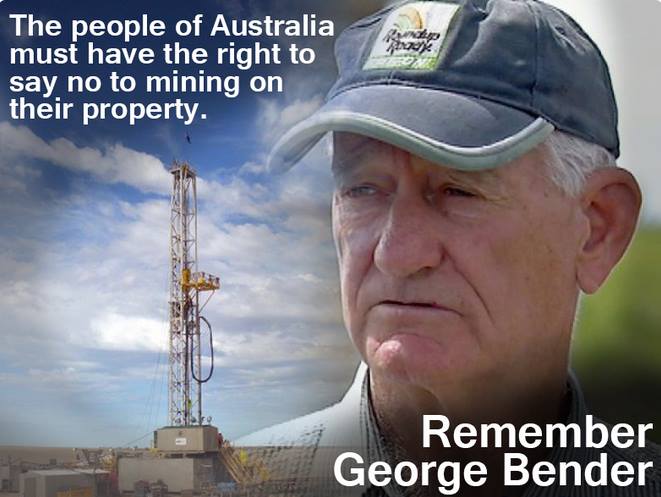

These Two Koalas Lost Their Mothers To Deforestation
I call on you to urgently end the deforestation and land-clearing crisis by making potential koala habitat, threatened species habitat, and other high-conservation-value areas off limits to clearing, and by repealing the land-clearing codes.
I also urge you to invest in a restoration and conservation fund and deliver the world-class mapping, monitoring, and reporting the community expects.
Recycle Your Old Mobile Phone To Save Gorilla Populations
December 2018: University of South AustraliaAre you among the 400 million people around the world who have relegated an old mobile phone to the top drawer in the past year?
Do you realise your reluctance to recycle that discarded phone could be linked to the dramatic decline of gorilla populations in the Democratic Republic of the Congo?
The link between hoarding disused mobile phones and the decimation of Grauer gorilla habitats is explored in a paper published today in PLOS ONE, authored by University of South Australia researchers and Zoos Victoria.
The two organisations evaluated the first six years of the ongoing 'They're Calling On You" mobile phone recycling program run by Zoos Victoria, as part of a national campaign operating in Australian zoos.
As part of the program, zoo visitors and the broader Victorian community were educated about the value of recycling discarded phones to extract special metals used in their construction -- the same metals which are being mined in the eastern Democratic Republic of Congo (DRC), not only destroying gorilla habitats but also funding wars and human rights abuses.
UniSA Conservation Psychologist and Great Ape expert Dr Carla Litchfield, the paper's lead author, says if 'conflict' elements -- including gold and coltan -- can be recovered from old mobile phones, there is less incentive to mine gorilla habitats for the same minerals.
"For every 30-40 mobile phones that are recycled, on average, one gram of gold can be recovered," Dr Litchfield says. "Just as mobile phone sales are soaring, and gold content is increasing in some smartphones, natural sources of gold are expected to run out by 2030."
The authors point out the barriers to recycling used phones, including lack of e-waste recycling points in many countries, secrecy around the phones' mineral composition, privacy concerns around accessing old data, and just plain hoarding.
In Germany, by 2035 it is predicted that more than 8000 tonnes of precious metals will lie in unrecycled mobile and smartphones, and in China, by 2025 an estimated nine tonnes of gold, 15 tonnes of silver and 3100 tonnes of copper will also be out of the supply loop in 0.35 billion unrecycled phones.
"Hoarding is problematic since precious metals are not extracted and returned to the circular economy, creating the need to mine these metals in wilderness areas.
"The other issue is that if people do discard their old phones, most dispose of them in their household waste, ending up in landfill, where they leach toxic metals."
Recent population estimates of Grauer gorillas in the DRC show a dramatic 73-93 per cent decline, with less than 4000 remaining in the wild and the species now listed as Critically Endangered.
Distinguished primatologist Dr Jane Goodall launched the national mobile recycling campaign at Melbourne Zoo in 2009 to educate visitors about the link between mining in the DRC, the destruction of gorilla habitats, and the importance of mobile phone recycling.
By 2014, zoo visitors in Victoria had donated more than 115,000 old mobile phones for recycling as a result of the social marketing initiative.
"This number may seem a drop in the ocean -- representing just 0.01 per cent of the one billion retired phones out there -- but when you look at the result in the context of a state of six million people, it is very impressive," says Dr Litchfield.
"Hopefully this campaign can be rolled out globally and then we could really make a difference."
NB: Old mobile phones can be dropped off for recycling at all major mobile phone retailers, including Telstra, Optus, Vodafone, Virgin Mobile, and Samsung stores. Otherwise they can be posted for free by picking up a reply paid satchel at Australia Post outlets.
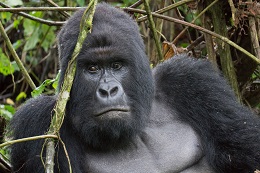
Carla A. Litchfield, Rachel Lowry, Jill Dorrian. Recycling 115,369 mobile phones for gorilla conservation over a six-year period (2009-2014) at Zoos Victoria: A case study of ‘points of influence’ and mobile phone donations. PLOS ONE, 2018; 13 (12): e0206890 DOI: 10.1371/journal.pone.0206890

Gap Bluff Decision
December 11, 2018: Media Release The NSW Government has decided not to proceed with a proposal by Gap Bluff Hospitality to build a commercial function and wedding centre at South Head.
Environment Minister Gabrielle Upton said the decision followed strong community opposition to the proposal.
Gap Bluff Hospitality had sought to re-use 6 buildings within Gap Bluff, South Head, Camp Cove and Green Point precinct in Sydney Harbour National Park.
The former Officers’ Mess and Armoury at Gap Bluff and Watsons Bay would have become function centres, catering for up to 400 people a day and short stay accommodation would have been available at Gap Cottage, Gap Bluff; Green Point Cottage, Green Point; 33 Cliff Street, Watsons Bay; and Constable’s Cottage, Camp Cove.
“There has been significant community opposition to the proposal and as a result I have decided the proposal should not proceed,” Ms Upton said.
“The community’s voice has been heard loud and clear. In all 1531 submissions were received, of which 1505 were opposed to the proposal, with 12 deemed neutral and 14 in support.
Ms Upton said any future plan for Gap Bluff must include strong collaboration between the National Parks and Wildlife Service and the local community.
Long Reef Guided Reef Walks
Please find below the 2017 – 2018 timetable for guided walks of Long Reef Aquatic Reserve.
If you’d like to join us on a walk please contact me a couple of weeks before the walk date to make a booking. FREE GUIDED WALKS of Long Reef Aquatic Reserve with NSW Department of Industry & Investment Fishcare Volunteers will be held on the following date:
Dates for 2019Sunday 6 January 2019 3:00pm – 5:00pmSunday 20 January 2019 2:00pm – 4:00pmSunday 17 February 2019 1:00pm – 3:00pmSunday 17 March 2019 11:30am – 1:30pmSunday 7 April 2019 2:30pm – 4:30pm
Walks are held subject to weather conditions
Bookings are preferred.Please email Wendy to book:
Smart Energy Conference & Exhibition 2019
Starts: 8:30am Tuesday, 2 April 2019Ends: 5:30pm Wednesday, 3 April 2019Location: International Convention Centre Sydney14 Darling Drive, Darling Harbour, New South Wales 2000Australia
The Smart Energy Conference and Exhibition is one of Australia’s biggest solar, storage and smart energy conference and exhibition.
Powered by the Smart Energy Council – incorporating the Australian Solar Council and Energy Storage Council, this is our 57th annual FREE-TO-ATTEND conference and exhibition.
TOP REASONS TO ATTEND- Over 6,000 delegates, 120 exhibitors and partners
- A showcase of the latest technology, demonstration of new business models and innovation
- Outstanding knowledge sharing and networking
- 3 Conference and information sessions with over 100 presenters
- CPD points for installers
- Over 6,000 delegates, 120 exhibitors and partners
- A showcase of the latest technology, demonstration of new business models and innovation
- Outstanding knowledge sharing and networking
- 3 Conference and information sessions with over 100 presenters
- CPD points for installers
Shoalhaven Hydro Expansion Project Declared Critical State Infrastructure
December 14, 2018: Departmental Media Release - NSW Department of Planning and EnvironmentThe $300 million Shoalhaven Hydro Expansion Project has been declared Critical State Significant Infrastructure (CSSI) by the Minister for Planning because of its importance to NSW’s future energy security.
Origin Energy proposes to expand the existing Shoalhaven Pumped Hydro Scheme from 240MW to 475MW and produce enough power for around 80,000 homes.
The proposed 235MW upgrade involves the construction of a new hydroelectric power and pump station and ancillary infrastructure which would be largely underground and located between Fitzroy Falls Reservoir and Lake Yarrunga.
The project is essential to NSW for economic reasons and will have environmental and social benefits by facilitating the state’s transition to a low emissions-based economy. It will also add increased competition in the electricity market, putting downward pressure on prices and creating around 350 jobs during construction.
Despite being declared ‘critical’, the project will still be subject to detailed community consultation and a full and thorough environmental assessment in accordance with NSW Government policies and standards.
Origin is expected to lodge two applications for the project, one for exploratory geotechnical works to inform the design of the project and the other for the expansion of the existing Shoalhaven scheme.
Origin will now request assessment requirements for the preparation of an Environmental Impact Statement (EIS) for the exploratory works application. When received, the EIS will go on exhibition for community feedback. After the consultation period ends, the applicant prepare a Response to Submissions report, which will be made publicly available on its website.
The Department will then assess the proposal, taking into account environmental, social and economic impacts, all community and stakeholder submissions received during exhibition, and advice from government and independent experts. The Department’s recommendation, including any conditions, will then be referred to the NSW Minister for Planning for a final decision.
Planning Commission Conflicts Of Interest And Meeting Cancellation Prompts Renewed Call For Mining Inquiry
December 12, 2018: Locak the Gate Media ReleaseLock the Gate Alliance has renewed its call for a Special Commission of Inquiry into the NSW mining sector following the sudden removal of two Planning Commissioners from a panel considering the controversial United Wambo coal mine project.
Their removal due to conflicts of interest meant the community was given just two hours notice that a public meeting about the project scheduled for this afternoon had been cancelled.
Commissioner Alice Clarke stood down from the panel considering the mine on Monday because her husband holds options in Glencore, one of the two proponents of the mine.
Today her replacement Commissioner Geoffrey Sharrock stood down from the panel because he used to be a managing director at Wambo Mining Corporation.
The two resignations came just days after a Commissioner tasked with considering the Vickery coal mine expansion in NSW’s northwest also stood down over a conflict of interest.
Lock the Gate Alliance spokesperson Georgina Woods said the public could not be expected to have any confidence in the planning system as it relates to mining.
"We have now seen three Commissioners step down in four days from two different mine project panels. Why are people with these types of conflicts even on the Commission?
"Cancelling this public meeting with two hours notice left community members angry and confused. The public is being treated with contempt.
"Other aspects of the planning portfolio are also in disarray after four whistleblowers have raised major issues with the administration of mining titles by the Department of Planning.
"Communities are being ripped apart by mining projects being considered by a planning system that is not operating objectively and which has lost the confidence of NSW residents.
"We urgently need the NSW Government to return the rights of communities to test resource projects on their merits in court and to immediately create a Special Commission of Inquiry into the mining sector in NSW.
"All mining projects that are currently being assessed should be put on hold until this process is complete," she said.
Community And Koalas At Heart Of Greater Macarthur 2040 Plan
November 19. 2018: Media Release - The Hon. Anthony Roberts, Minister for Planning, Minister for Housing, Special Minister of State
Minister for Planning and Housing, Anthony Roberts, today invited community comment on plans for the future of Greater Macarthur, which propose well-planned communities, greatly improved roads, better transport connections, protection for koalas and jobs for local residents.
“The Greater Macarthur 2040 Interim Plan demonstrates how the NSW Government is planning for the future of this important region over the next 20 years,” Mr Roberts said.
“Under the plan, future residents will be better connected with easy access to public transport, new parks, and recreation space, all accessible via walkways and cycle ways for a growing community.
“The protection of the koala population and habitat is a primary consideration, with a corridor proposed on government lands east of Appin Road for a koala reserve and plans to upgrade and install protective fencing to ensure koalas can move safely through the local area.
Minister for Roads, Maritime and Freight Melinda Pavey, said road improvements to Appin Road and the development of the Spring Farm Parkway will ensure the safety of road users and koalas.
“The creation of Spring Farm Parkway and the significant upgrade to Appin Road will ensure thousands of road users every day can use the road safely and efficiently, as well as protecting the local koala population,” Ms Pavey said.
Mr Roberts said that Special Infrastructure Contribution (SIC) schemes for Greater Macarthur will ensure the necessary infrastructure is in place and paid for by developers.
“The SIC developed as part of Greater Macarthur 2040 will direct up to $1.58 billion towards infrastructure to provide funding for roads, schools, health and emergency services, and to make Greater Macarthur a highly desirable location for current and future residents,” he said
The Greater Macarthur 2040 Interim Plan includes a $1 million grant program to ensure Koala friendly planning occurs in the area.
The funding will be released over the next two years to community groups, landowners and local council to undertake koala research, tree planting, pest management, and build greater community awareness about Koalas and their habitat.
The Interim Plan includes 12 precincts. A detailed plan for each precinct will show how new homes will be provided along with adequate open space, a variety of welldesigned housing options, transport connections, local employment, and shopping facilities.
The community is invited to have a say on the draft Plan and SIC until 8 February 2019. Visit: www.planning.nsw.gov.au/greatermacarthur
November 19. 2018: Media Release - The Hon. Anthony Roberts, Minister for Planning, Minister for Housing, Special Minister of State
Minister for Planning and Housing, Anthony Roberts, today invited community comment on plans for the future of Greater Macarthur, which propose well-planned communities, greatly improved roads, better transport connections, protection for koalas and jobs for local residents.
“The Greater Macarthur 2040 Interim Plan demonstrates how the NSW Government is planning for the future of this important region over the next 20 years,” Mr Roberts said.
“Under the plan, future residents will be better connected with easy access to public transport, new parks, and recreation space, all accessible via walkways and cycle ways for a growing community.
“The protection of the koala population and habitat is a primary consideration, with a corridor proposed on government lands east of Appin Road for a koala reserve and plans to upgrade and install protective fencing to ensure koalas can move safely through the local area.
Minister for Roads, Maritime and Freight Melinda Pavey, said road improvements to Appin Road and the development of the Spring Farm Parkway will ensure the safety of road users and koalas.
“The creation of Spring Farm Parkway and the significant upgrade to Appin Road will ensure thousands of road users every day can use the road safely and efficiently, as well as protecting the local koala population,” Ms Pavey said.
Mr Roberts said that Special Infrastructure Contribution (SIC) schemes for Greater Macarthur will ensure the necessary infrastructure is in place and paid for by developers.
“The SIC developed as part of Greater Macarthur 2040 will direct up to $1.58 billion towards infrastructure to provide funding for roads, schools, health and emergency services, and to make Greater Macarthur a highly desirable location for current and future residents,” he said
The Greater Macarthur 2040 Interim Plan includes a $1 million grant program to ensure Koala friendly planning occurs in the area.
The funding will be released over the next two years to community groups, landowners and local council to undertake koala research, tree planting, pest management, and build greater community awareness about Koalas and their habitat.
The Interim Plan includes 12 precincts. A detailed plan for each precinct will show how new homes will be provided along with adequate open space, a variety of welldesigned housing options, transport connections, local employment, and shopping facilities.
The community is invited to have a say on the draft Plan and SIC until 8 February 2019. Visit: www.planning.nsw.gov.au/greatermacarthur
Upgrade Of Appin Road Between Ambarvale And Mt Gilead
Roads and Maritime Services will be displaying two Review of Environmental Factors’ (REFs) for the proposed upgrade of Appin Road between Ambarvale and Mt Gilead and proposed Appin Road safety improvement work between Mt Gilead and Appin.
Appin Road is a busy state road which caters to thousands of vehicles each day, including many trucks carrying freight between Wollongong and Sydney’s south-western suburbs so it’s exciting to see progress on these projects.
The REFs will be on display until Friday 14 December, giving the community a chance to have a say on the proposed upgrade and safety improvement work.
Community Information Sessions
We will also host three community information sessions to provide you with an opportunity to ask the individual project teams questions and seek further information. A formal presentation will not be given so please feel free to drop in any time at one of the following sessions:
Saturday 24 November between 10am and 1pm
Appin Public School Hall
97 Appin Road, Appin
Wednesday 28 November between 5pm and 8pm
Hurley Park Community Hall
161 Dumaresq Street, Campbelltown
Wednesday 5 December between 5pm and 8pm
Rosemeadow Community Hall
5 Glendower Street, Rosemeadow
If you are unable to attend one of the information sessions, please contact the project team to discuss, or to arrange another time that is suitable to meet. To make a submission or to join the mailing list for either project please contact the relevant project team:
- Phone: 1800 411 588
- Appin Road upgrade Email: appinroadsafety@rms.nsw.gov.au
- Mail: Appin Road Upgrade
- Roads and Maritime Services
- PO Box 973 Parramatta CBD NSW 2124
- Appin Road safety improvements
- Email: appinroadsafety@rms.nsw.gov.au
- Mail: Appin Road Safety Improvements
- Roads and Maritime Services
- PO Box 973 Parramatta CBD NSW 2124
The REF documents can be viewed electronically, or you can view printed versions at the following locations:
Campbelltown Civic Centre
91 Queen Street, Campbelltown
Monday to Friday 8.30am to 4.30pm
Narellan Library
Corner Queen and Elyard Street, Narellan
Monday, Wednesday 9.30am to 8pm
Tuesday, Thursday, Friday 9.30am to 5pm
Saturday 9am to 3pm
Wollondilly Shire Council
62–64 Menangle Street, Picton
Monday to Friday 8.30am to 5pm
Camden Library
40 John Street, Camden
Monday, Wednesday, Friday 9.30am to 5pm
Tuesday, Thursday 9.30am to 8pm
Saturday 9am to 12pm
The Department of Planning and Environment will commence exhibition of a Voluntary Planning Agreement to fund more than $80 million of works for the first stage of upgrades to Appin Road. The proposed works are linked to the first 2,000 new homes to be constructed under already zoned lands at Gilead, the first stage of the broader Greater Macarthur Plan.
f) Any impact on the habitat of protected fauna (within the meaning of the National Parks and Wildlife Act 1974)?
The proposal would result in the removal of 1.88 ha of Cumberland Plain Woodland and 1.81 ha of Shale Sandstone Transition Forest. Koala habitat would also be impacted as a result of the proposal. Safeguards and mitigation measures have been proposed such as fauna fencing.
Impact: Long term negative
Visit June 2018 report: Community Calls On Government To Put Koalas Before Developers For Once
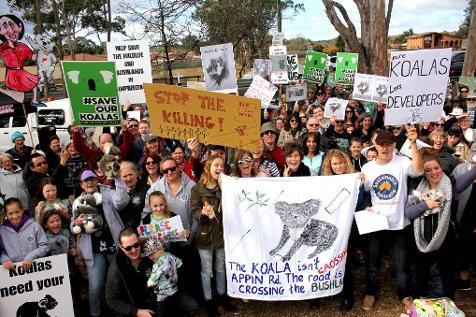
Roads and Maritime Services will be displaying two Review of Environmental Factors’ (REFs) for the proposed upgrade of Appin Road between Ambarvale and Mt Gilead and proposed Appin Road safety improvement work between Mt Gilead and Appin.
Appin Road is a busy state road which caters to thousands of vehicles each day, including many trucks carrying freight between Wollongong and Sydney’s south-western suburbs so it’s exciting to see progress on these projects.
The REFs will be on display until Friday 14 December, giving the community a chance to have a say on the proposed upgrade and safety improvement work.
Community Information Sessions
We will also host three community information sessions to provide you with an opportunity to ask the individual project teams questions and seek further information. A formal presentation will not be given so please feel free to drop in any time at one of the following sessions:
Saturday 24 November between 10am and 1pm
Appin Public School Hall
97 Appin Road, Appin
Wednesday 28 November between 5pm and 8pm
Hurley Park Community Hall
161 Dumaresq Street, Campbelltown
Wednesday 5 December between 5pm and 8pm
Rosemeadow Community Hall
5 Glendower Street, Rosemeadow
If you are unable to attend one of the information sessions, please contact the project team to discuss, or to arrange another time that is suitable to meet. To make a submission or to join the mailing list for either project please contact the relevant project team:
- Phone: 1800 411 588
- Appin Road upgrade Email: appinroadsafety@rms.nsw.gov.au
- Mail: Appin Road Upgrade
- Roads and Maritime Services
- PO Box 973 Parramatta CBD NSW 2124
- Appin Road safety improvements
- Email: appinroadsafety@rms.nsw.gov.au
- Mail: Appin Road Safety Improvements
- Roads and Maritime Services
- PO Box 973 Parramatta CBD NSW 2124
The REF documents can be viewed electronically, or you can view printed versions at the following locations:
Campbelltown Civic Centre
91 Queen Street, Campbelltown
Monday to Friday 8.30am to 4.30pm
Narellan Library
Corner Queen and Elyard Street, Narellan
Monday, Wednesday 9.30am to 8pm
Tuesday, Thursday, Friday 9.30am to 5pm
Saturday 9am to 3pm
Wollondilly Shire Council
62–64 Menangle Street, Picton
Monday to Friday 8.30am to 5pm
Camden Library
40 John Street, Camden
Monday, Wednesday, Friday 9.30am to 5pm
Tuesday, Thursday 9.30am to 8pm
Saturday 9am to 12pm
The Department of Planning and Environment will commence exhibition of a Voluntary Planning Agreement to fund more than $80 million of works for the first stage of upgrades to Appin Road. The proposed works are linked to the first 2,000 new homes to be constructed under already zoned lands at Gilead, the first stage of the broader Greater Macarthur Plan.
f) Any impact on the habitat of protected fauna (within the meaning of the National Parks and Wildlife Act 1974)?
The proposal would result in the removal of 1.88 ha of Cumberland Plain Woodland and 1.81 ha of Shale Sandstone Transition Forest. Koala habitat would also be impacted as a result of the proposal. Safeguards and mitigation measures have been proposed such as fauna fencing.
Impact: Long term negative
Visit June 2018 report: Community Calls On Government To Put Koalas Before Developers For Once

Mount Gilead (Lendlease Communities) Planning Agreement: Have A Say
Notification start date 20/11/2018
Notification end date 18/12/2018
The public is being notified of this VPA prior to its finalisation and execution. You're invited to make a submission using the form below. (Visit link;)
Have your say at: vparegister.planning.nsw.gov.au/index.job_id=9398
Notification start date 20/11/2018
Notification end date 18/12/2018
The public is being notified of this VPA prior to its finalisation and execution. You're invited to make a submission using the form below. (Visit link;)
Have your say at: vparegister.planning.nsw.gov.au/index.job_id=9398
The Long Dry: Global Water Supplies Are Shrinking
December 13, 2018 - by Wilson Da Silva, UNSWA global study has found a paradox: our water supplies are shrinking at the same time as climate change is generating more intense rain. And the culprit is the drying of soils, say researchers, pointing to a world where drought-like conditions will become the new normal, especially in regions that are already dry.
The study – the most exhaustive global analysis of rainfall and rivers – was conducted by a team led by Professor Ashish Sharma at Australia’s UNSW (University of New South Wales) in Sydney. It relied on actual data from 43,000 rainfall stations and 5300 river monitoring sites in 160 countries, instead of basing its findings on model simulations of a future climate, which can be uncertain and at times questionable.
Large rivers drying out“This is something that has been missed,” said Sharma, an ARC Future Fellow at UNSW’s School of Civil and Environmental Engineering. “We expected rainfall to increase, since warmer air stores more moisture – and that is what climate models predicted too. What we did not expect is that, despite all the extra rain everywhere in the world, the large rivers are drying out.
“We believe the cause is the drying of soils in our catchments. Where once these were moist before a storm event – allowing excess rainfall to run off into rivers – they are now drier and soak up more of the rain, so less water makes it as flow.
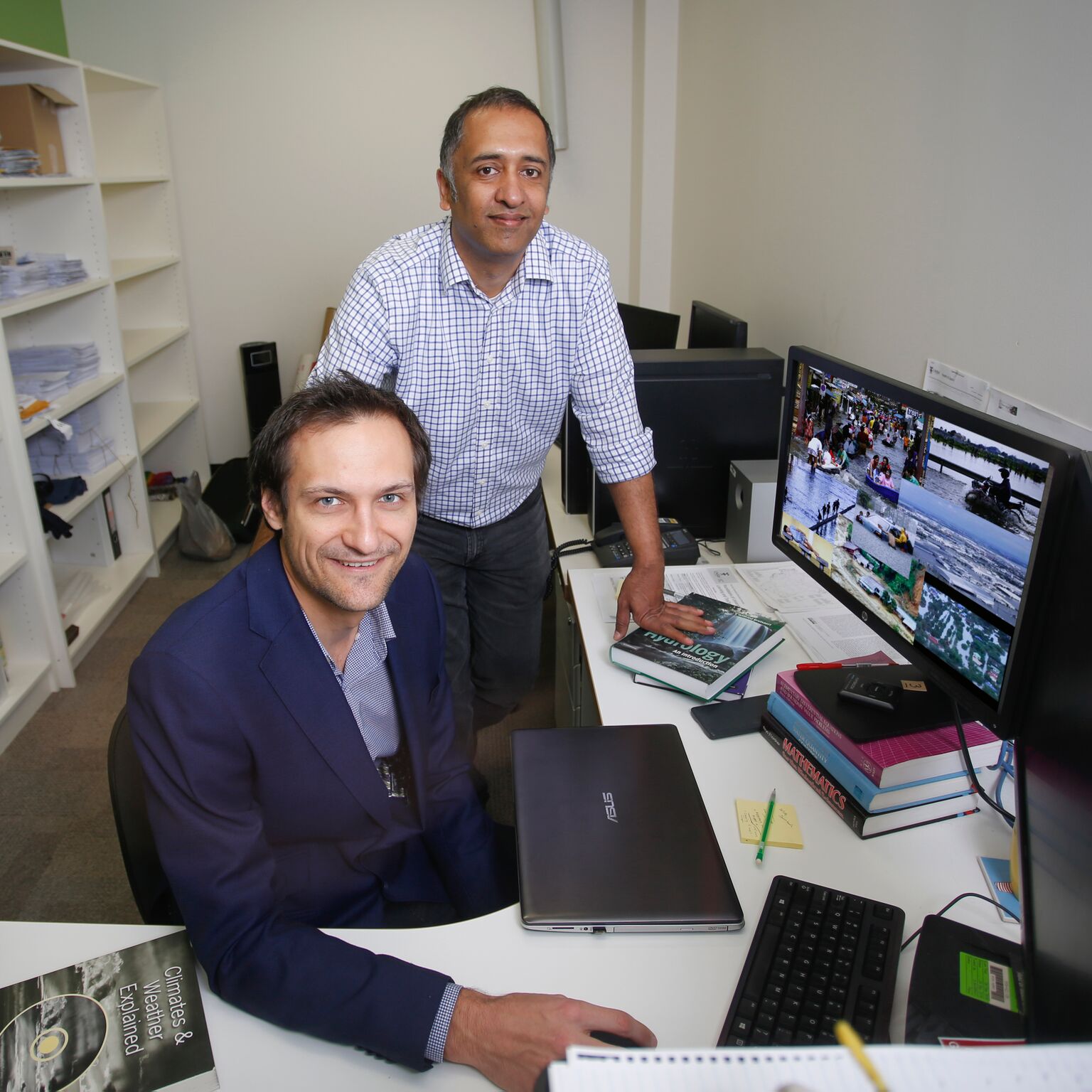
Prof Ashish Sharma (left) and Dr Conrad Wasko at UNSW. Photo: Quentin Jones
“Less water into our rivers means less water for cities and farms. And drier soils means farmers need more water to grow the same crops. Worse, this pattern is repeated all over the world, assuming serious proportions in places that were already dry. It is extremely concerning,” he added.
'Blue water' vs 'green water'For every 100 raindrops that fall on land, only 36 drops are ‘blue water’ – the rainfall that enters lakes, rivers and aquifers – and therefore, all the water extracted for human needs. The remaining two thirds of rainfall is mostly retained as soil moisture – known as ‘green water’ – and used by the landscape and the ecosystem.
As warming temperatures cause more water to evaporate from soils, those dry soils are absorbing more of the rainfall when it does occur – leaving less ‘blue water’ for human use.
“It’s a double whammy,” said Sharma. “Less water is ending up where we can store it for later use. At the same time, more rain is overwhelming drainage infrastructure in towns and cities, leading to more urban flooding.”Global conversation needed
Professor Mark Hoffman, UNSW’s Dean of Engineering, welcomed Sharma’s research and called for a global conversation about how to deal with this unfolding scenario, especially in Australia, which is already the driest inhabited continent (apart from Antarctica).
“It’s clear there’s no simple fix, so we need to start preparing for this,” he said. “Climate change keeps delivering us unpleasant surprises. Nevertheless, as engineers, our role is to identify the problem and develop solutions. Knowing the problem is often half the battle, and this study has definitely identified some major ones.”
The findings were made over the past four years, in research that appeared in Nature Geoscience, Geophysical Research Letters, Scientific Reports.
In the most recent paper, published in November in the American Geophysical Union’s Water Resources Research, Sharma and colleagues write that despite widespread global evidence of rising precipitation extremes, there’s no evidence of an increase in flooding, with evidence pointing more towards decreased flood peaks for the moderate flood events that form the key refill events in water supply reservoirs. “While extreme floods may increase due to the larger storms that are occurring, these floods are often too large to be stored for water supply. It is the less extreme floods our reservoirs depend on,” Sharma said.
“On the whole, flood magnitudes are decreasing,” write Sharma and his co-authors, Dr Conrad Wasko of the University of Melbourne, and Professor Dennis Lettenmaier of the University of California Los Angeles. (Wasko was Sharma’s PhD student at UNSW during most of the research).
Large declines in soil moistureThey suggest that large declines in the amount of moisture in the soil, coupled with the contraction in the geographical spread of each storm event, are the major reasons why increases in extreme rainfall are not resulting in corresponding increases in flooding.
They point to previous US research that shows that, in extreme rainfall events, if surrounding soils are wet before a storm, 62% of the rain leads to flooding that is captured by catchments. But when soils are dry, only 13% of the rain results in flooding.
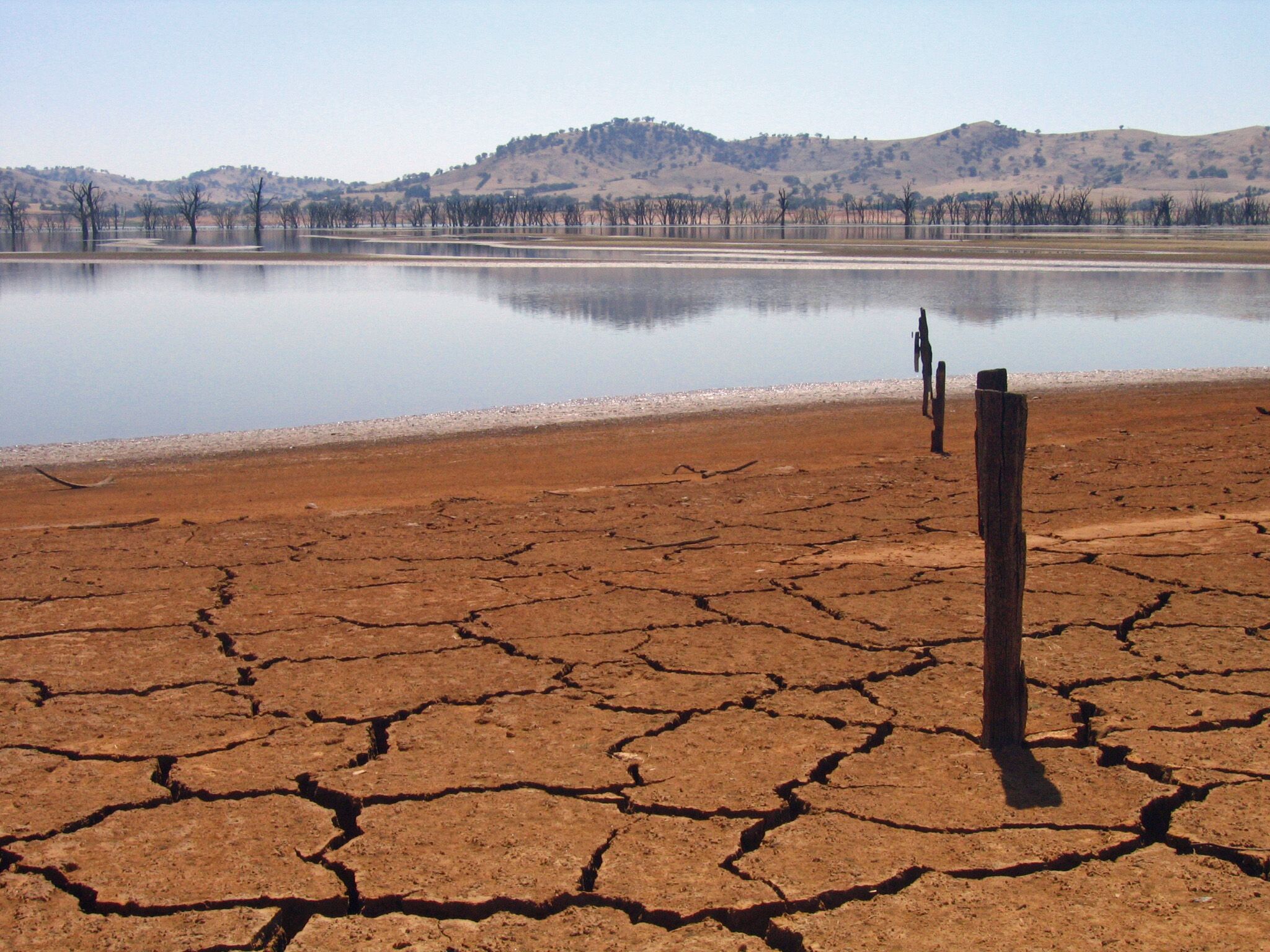
Lake Hume, on the Upper Murray, New South Wales.
“This is kind of contradicting the increasing flood argument in past IPCC [Intergovernmental Panel on Climate Change] reports, but pointing to possibly a far worse scenario,” said Sharma. “Small floods are very important for water supply, because they refill dams and form the basis of our water supply,” said Sharma.
“But they’re happening less often, because the soils are sucking up the extra rain. Even when a major storm dumps a lot of rain, the soils are so dry they absorb more water than before, and less reaches the rivers and reservoirs.”
Reduced flows into reservoirsPast research has so far missed this. “Everybody has been obsessed by the flood side of the equation but have ignored the more critical component, which is the embattled water supply that comes from reduced flows into our reservoirs,” he added.
So what is the solution? “One option is to wait for international agreements to take effect, so greenhouse gas concentrations can be reined in – but this will take a long time. The other option is to be proactive, and re-engineer our water systems so we can better adapt and cope.”
To adapt to this new reality, new policies and infrastructure is needed. In areas where water supply is shrinking, water-intensive farming will need to be curtailed or moved elsewhere, while reservoir storage capacities may need to be expanded. In urban areas, where flooding is becoming more common, incentives to create ‘green cities’ and to store or divert flood water will need to be explored.
Re-engineering on a massive scale“We need to adapt to this emerging reality,” said Sharma. “We’re going to need re-engineering on a massive scale in some places if we are to continue living in them. But it’s possible: places like Arizona and California receive barely 400mm of rain each year, but have engineered their water supply systems to make previously uninhabitable places liveable.
“Or take the Snowy Mountain Scheme: it’s not just about hydroelectricity, it’s also a complex water supply scheme with 225km of tunnels, pipelines and aqueducts.”
Sharma said the answer was not just more dams. “Re-engineering solutions are not simple, they have to be analysed on a region-by-region basis, looking at the costs and the benefits, looking at the change expected into the future, while also studying past projects so mistakes are not repeated. There are no silver bullets. Any large-scale re-engineering project will require significant investment, but the cost of inaction could be monstrous.”
In urban areas, the reverse will be needed: flooding is becoming more common and more intense. Global economic losses from flooding have risen from an average of $500 million a year in the 1980s to around $20 billion annually by 2010; by 2013, this rose to more than $US50 billion. The Intergovernmental Panel on Climate Change expects this to more than double in the next 20 years as extreme storms and rainfall intensify and growing numbers of people move into urban centres.
Adapting to this is possible, but will require large-scale re-engineering of many cities, says Sharma. “Tokyo used to get clobbered by floods every year, but they built a massive underground tank beneath the city that stores the floodwater, and releases it later. You never see floods there now.”


Seeding Southern Clouds
December 12, 2018: Australian Antarctic DivisionA mobile air chemistry lab called AIRBOX is hitching a ride on Australia’s icebreaker RSV Aurora Australis this summer, to peer into clouds as the ship plies the Southern Ocean.
By shading the earth’s surface and reflecting heat, clouds play a direct role in global warming. Clouds are seeded by tiny particles called aerosols, such as dust, soot or salt crystals.
The AIRBOX campaign, led by the University of Melbourne as part of the Australian Antarctic Program, is investigating the properties of these aerosols.
“We want to know how many aerosols there are, how large they are, how reflective they are, and how much water they can take up,” said project leader Dr Robyn Schofield.
This will provide vital details about the contribution of Southern Ocean clouds to regulating the Earth’s temperature, and remove some of the uncertainty in global climate models.
In the relatively unpolluted air above the Southern Ocean, the major source of aerosols is sea salt from wind shearing the tops off waves.
As a result, the concentrations of aerosols in the polar atmosphere above the Antarctic sea-ice differ from anywhere else.
There are also chemical processes in the ocean and in the sea ice that may influence aerosol concentrations.
The project aims to better understand where the aerosols are coming from that influence the clouds and how they are chemically made.
AIRBOX is a modified shipping container with nine instruments operating from the ship’s upper deck for six months. At least eight other instruments will be added over the summer.
Instruments include:- a mini-LIDAR that uses laser pulses to measure aerosol and cloud profiles up to 10 kilometres up;
- an ozone monitor:
- a trace gas analyser to measure greenhouse gases such as carbon dioxide, nitrous oxide and methane, and
- a spectrometer to measure ultraviolet and visible light and chemicals including bromine monoxide, a naturally-occurring chemical that removes atmospheric mercury produced from industrial sources and power generation.
The use of these instruments is an innovative approach that has not been applied before in this part of the world and will help to improve the reliability of climate models for this region.
Also involved in the AIRBOX (Atmospheric Integrated Research facility for Boundaries and Oxidative Experiments) campaign are the Australian Antarctic Division, University of Tasmania, University of Melbourne, Queensland University of Technology, Macquarie University, University of Wollongong, CSIRO, Monash University and the Australian Nuclear Science and Technology Organisation (ANSTO).
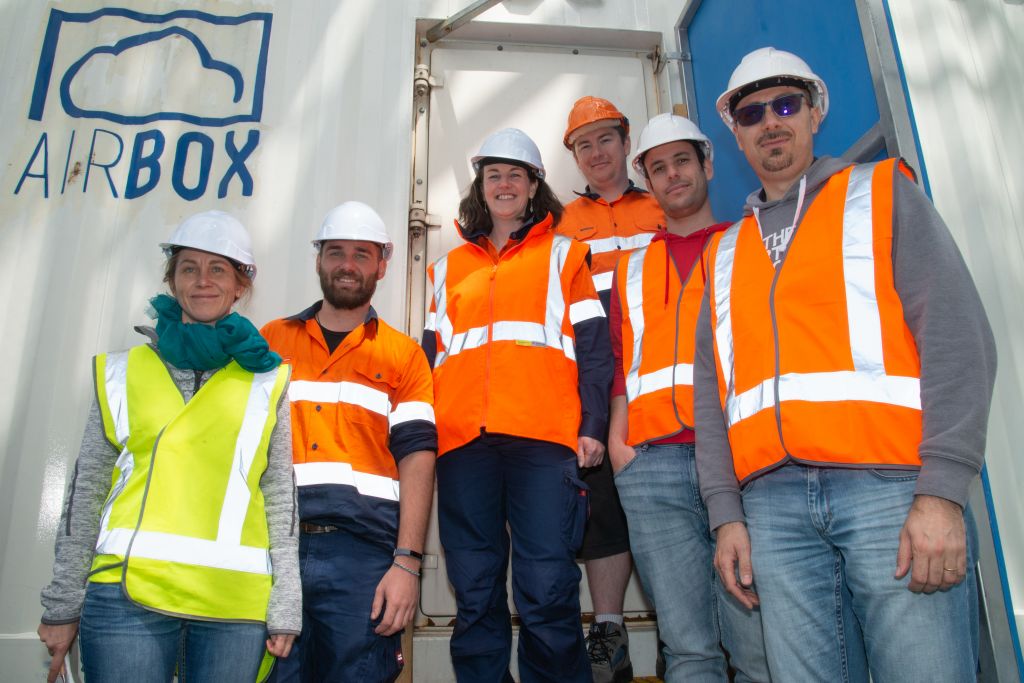
Some members of the AIRBOX team: (from left) Dr Dagmar Kürbistin (Uni of Wollongong), Jared Lewis (Uni of Melbourne), Dr Robyn Schofield (Uni of Melbourne), Dr Ruhi Humphries (CSIRO), Dr Alberto Alberello (Uni of Adelaide), and Dr Alessandro Toffoli (Uni of Melbourne) (Photo: Glenn Jacobson)
- a mini-LIDAR that uses laser pulses to measure aerosol and cloud profiles up to 10 kilometres up;
- an ozone monitor:
- a trace gas analyser to measure greenhouse gases such as carbon dioxide, nitrous oxide and methane, and
- a spectrometer to measure ultraviolet and visible light and chemicals including bromine monoxide, a naturally-occurring chemical that removes atmospheric mercury produced from industrial sources and power generation.

A Glimmer Of Hope For The World’s Coral Reefs
December 11, 2018: ARCThe future of the world’s coral reefs is uncertain, as the impact of global heating continues to escalate. However, according to a study published today in Nature Climate Change, the response of the Great Barrier Reef to extreme temperatures in 2017 was markedly different to one year earlier, following two back-to-back bouts of coral bleaching. Remarkably, corals that bleached and survived 2016 were more resistant in 2017 to a recurrence of hot conditions.
“Dead corals don’t bleach for a second time. The north lost millions of heat-sensitive corals in 2016, and most of the survivors were the tougher species. As a result of bleaching, the mix of species is changing very rapidly,” said lead author Prof Terry Hughes, Director of the Australian Research Council Centre of Excellence for Coral Reef Studies (Coral CoE), headquartered at James Cook University.“We were astonished to find less bleaching in 2017, because the temperatures were even more extreme than the year before,” he said.The new research highlights the extent of damage, or “geographic footprint” of multiple coral bleaching events across the 2,300 km length of the world-heritage listed area.
The back-to-back heatwaves bring the total number of mass bleaching events on the Great Barrier Reef to four over the past two decades (in 1998, 2002, 2016 and 2017). The scientists found that only 7% of the Great Barrier Reef escaped bleaching entirely since 1998, and after the 2017 event, 61% of reefs have now been severely bleached at least once.
“We found, using the National Oceanic and Atmospheric Administration’s (NOAA) satellite-based coral bleaching tools, that corals in the north of the Great Barrier Reef were exposed to the most heat stress in 2016. A year later, the central region saw the most prolonged heating,” said co-author Dr Mark Eakin, from NOAA’s Coral Reef Watch program, in Maryland, USA.
The southern third of the Great Barrier Reef was cooler in both years due to local weather conditions, and escaped with only minor bleaching.
“It’s only a matter of time before we see another mass-bleaching event, triggered by the next marine heatwave, driven by global heating,” said co-author Dr Andrew Hoey of Coral CoE at James Cook University. “One of the worst possible scenarios is we’ll see these southern corals succumb to bleaching in the near future.”
“The outcome in 2017 depended on the conditions experienced by the corals one year earlier. We called that ‘ecological memory,’ and show that these repeating events are now acting together in ways that we didn’t expect,” said Prof Hughes.
“We’ve never seen back-to-back mass coral bleaching before on the Great Barrier Reef, in two consecutive summers. The combined footprint has killed close to half of the corals on two-thirds of the world’s largest reef system,” said Dr Hoey.
“We need urgent global action on greenhouse emissions to save the world’s coral reefs. Australia should be – but regrettably isn’t – at the forefront of tackling global heating,” said Prof Hughes.
Terry P. Hughes, James T. Kerry, Sean R. Connolly, Andrew H. Baird, C. Mark Eakin, Scott F. Heron, Andrew S. Hoey, Mia O. Hoogenboom, Mizue Jacobson, Gang Liu, Morgan S. Pratchett, William Skirving, Gergely Torda. Ecological memory modifies the cumulative impact of recurrent climate extremes. Nature Climate Change, 2018; DOI: 10.1038/s41558-018-0351-2
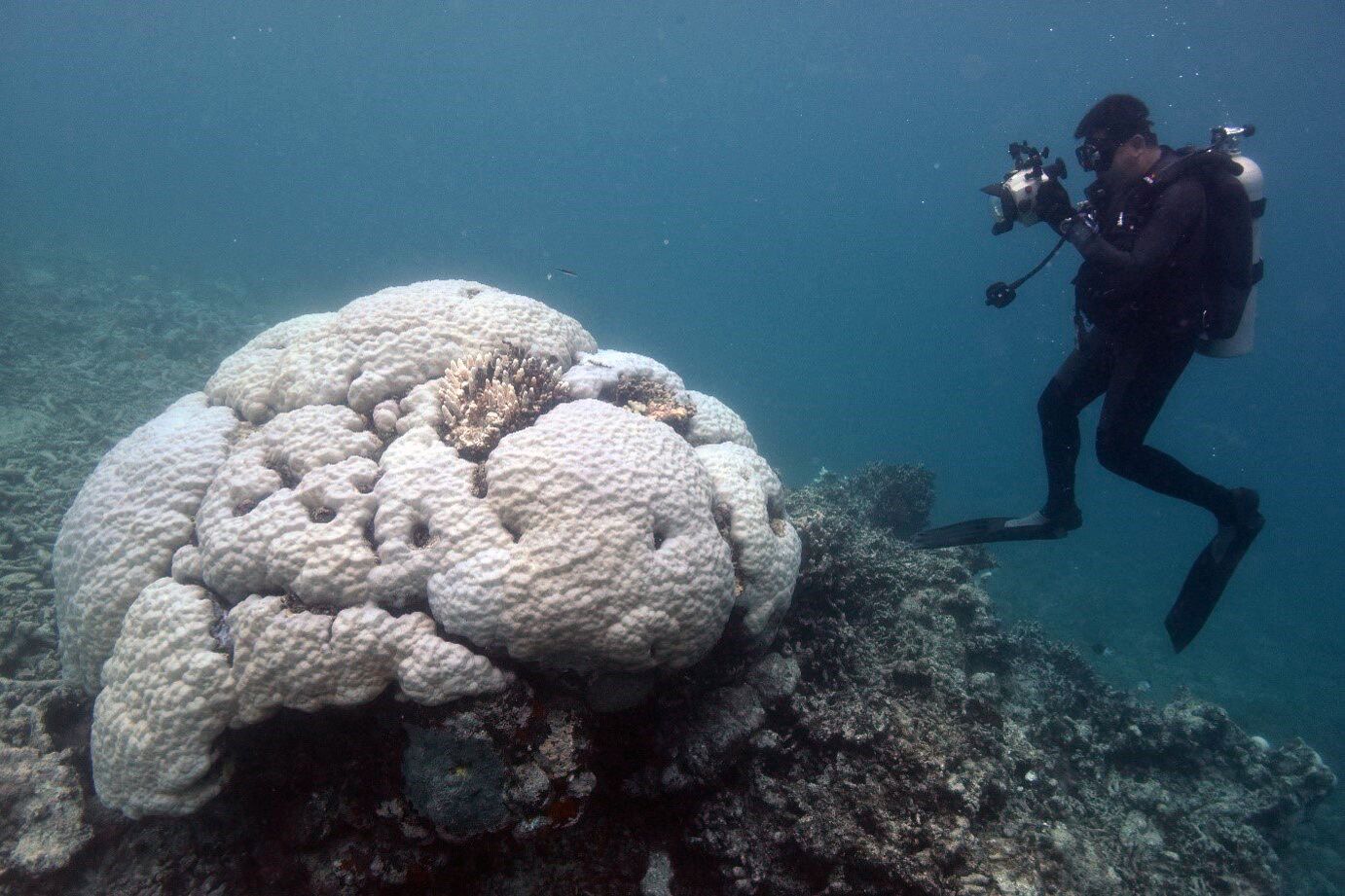
During an underwater survey, a researcher records the bleaching severity of a massive Porites coral colony on the Great Barrier Reef. Credit: Justin Marshall

Iceland’s Banned TV Christmas Advert... Say Hello To Rang-Tan.
#NoPalmOilChristmasPublished by Iceland FoodsYou won't see our Christmas advert on TV this year.But we want to share our 'No Palm Oil' story with you this Christmas. Say hello to Rang-tan.
Powerful Owl Release
March 18, 2018: Avalon Preservation AssociationPNHA's Jacqui Marlow has advised that a Powerful Owl chick has been released in Plateau Park following its recuperation in Taronga Park.
If you see it there being harassed, or even if you see it at all, can you please phone her on 0458 194 127.
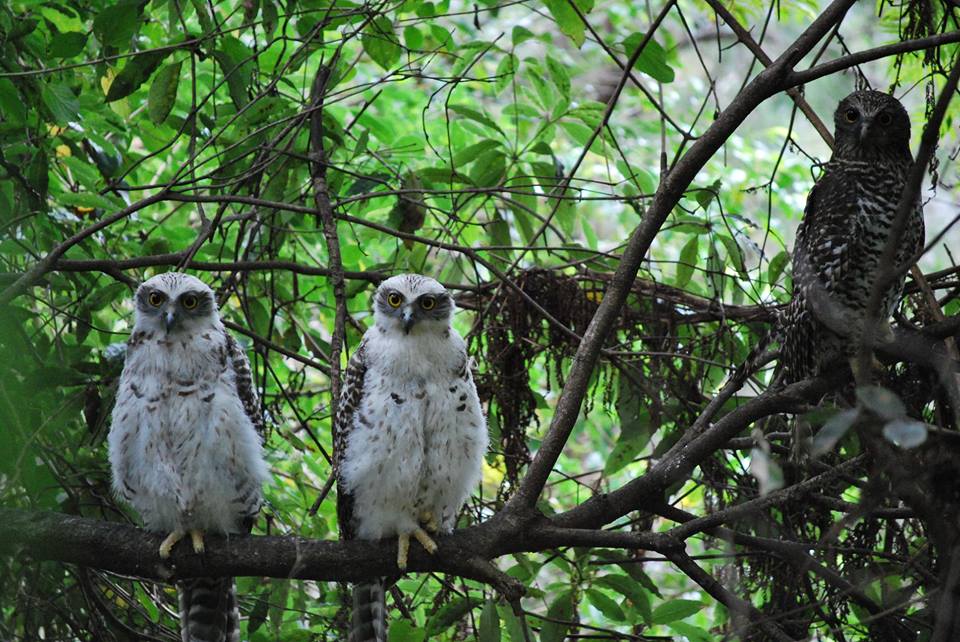
Powerful owl family - photo courtesy PNHA

In Older People Type 2 Diabetes Is Associated With A Decline In Brain Function Over 5 Years
December 13, 2018: UTASNew research published in Diabetologia (the journal of the European Association for the Study of Diabetes [EASD]) shows that in older people living in the community, type 2 diabetes (T2D) is associated with a decline in verbal memory and fluency over 5 years.
However, contrary to previous studies, the decrease in brain volume often found in older people with T2D was not found to be directly associated with cognitive decline during this time period. Yet compared with people without T2D, those with T2D had evidence of greater brain atrophy at the beginning of the study.
Previous research has shown that T2D can double the risk of dementia in older people. In this new study, Dr Michele Callisaya (University of Tasmania, Hobart, TAS, and Monash University, Melbourne, VIC, Australia) and colleagues aimed to discover whether type 2 diabetes is associated with greater brain atrophy and cognitive decline, and whether the two are linked. It is the first study to compare decline in both cognition and brain atrophy between people with and without T2D together in the same study.
The trial recruited 705 people aged 55-90 years from the Cognition and Diabetes in Older Tasmanians (CDOT) study. There were 348 people with T2D (mean age 68 years) and 357 without (mean age 72 years) who underwent brain MRI (lateral ventricular and total brain volume -- measures of brain atrophy) and neuropsychological measures (global function and seven cognitive domains) at three time points over a mean follow-up period of 4.6 years.
The results were adjusted for age, sex, education and vascular risk factors including past or current smoking, heart attack, stroke, high blood pressure, high cholesterol, and body mass index. The authors reported there were significant associations found between T2D and greater decline in both verbal memory and verbal fluency.
Although people with diabetes had evidence of greater brain atrophy at the start of the study, there was no difference in the rate of brain atrophy between those with and without diabetes over the time course in this study. There was also no evidence in the study that the rate of brain atrophy directly impacted on the diabetes-cognition relationship.
In people without type 2 diabetes, verbal fluency slightly increased on average each year (0.004 SD/units per year), whereas it declined in those with type 2 diabetes (?0.023 SD/units per year). The authors say: "Such accelerated cognitive decline may contribute to executive difficulties in everyday activities and health behaviours -- such as medication compliance -- which in turn may poorly influence future vascular health and cognitive decline, and possibly an earlier onset of dementia in those with type 2 diabetes."
They add: "Contrary to our hypotheses and results from previous cross-sectional studies, the rate of brain atrophy over these 5 years of study did not directly mediate associations between type 2 diabetes and cognitive decline. It is possible that greater accrual of cerebrovascular disease than occurred in our study may be more likely to reveal whether there is such a relationship."
They conclude: "In older community-dwelling people, type 2 diabetes is associated with a decline in verbal memory and fluency over approximately 5 years, but the effect of diabetes on brain atrophy may begin earlier, for example in midlife, given the evidence of greater brain atrophy in people with T2D at the start of the study. If this is the case, both pharmacological and lifestyle interventions to prevent brain atrophy in people with T2D may need to commence before older age."
Michele L. Callisaya, Richard Beare, Chris Moran, Thanh Phan, Wei Wang, Velandai K. Srikanth. Type 2 diabetes mellitus, brain atrophy and cognitive decline in older people: a longitudinal study. Diabetologia, 2018; DOI: 10.1007/s00125-018-4778-9
First-Ever Look At Complete Skeleton Of Thylacoleo; Australia's Extinct 'Marsupial Lion'
December 12, 2018Thyalacoleo carnifex, the "marsupial lion" of Pleistocene Australia, was an adept hunter that got around with the help of a strong tail, according to a study released December 12, 2018 in the open-access journal PLOS ONE by Roderick T. Wells of Flinders University and Aaron B. Camens of the South Australia Museum, Adelaide. These insights come after newly-discovered remains, including one nearly complete fossil specimen, allowed these researchers to reconstruct this animal's entire skeleton for the first time.
A marsupial predator with an estimated weight of over 100kg, Thylacoleo was unlike any living animal, and paleontologists have long tried to interpret its lifestyle from incomplete remains. The new fossils, discovered in Komatsu Cave in Naracoorte and Flight Star Cave in the Nullarbor Plain, include the first known remains of the tail and collarbone of this animal. The authors used this new information to re-assess the biomechanics of Thylacoleo, and by comparing its anatomy to living marsupials, reach new conclusions about the biology and behavior of the "marsupial lion."
The tail of Thylacoleo appears to have been stiff and heavily-muscled, probably allowing it to be used along with the hind limbs as a "tripod" to brace the body while freeing up the forelimbs for handling food or climbing, as many living marsupials do. The analysis suggests that Thylacoleo had a rigid lower back and powerful forelimbs anchored by strong collarbones, likely making it poorly suited for chasing prey, but well-adapted for ambush hunting and/or scavenging. These features also add to a list of evidence that Thylacoleo was an adept climber, perhaps of trees or steep-walled caverns. Among living marsupials, the anatomy of Thylacoleo appears most similar to the Tasmanian devil, a small carnivore that exhibits many of these inferred behaviors.
The authors add: "The extinct marsupial lion, Thylacoleo carnifex has intrigued scientists since it was first described in 1859 from skull and jaw fragments collected at Lake Colongulac in Victoria Australia and sent to Sir Richard Owen at the British Museum. Although Australia's largest marsupial carnivore it retains many features indicative of its diprotodont herbivore ancestry and its niche has been a matter of considerable debate for more than 150yrs. Recent cave finds have for the first time enabled a description and reconstruction of the complete skeleton including the hitherto unrecognised tail and clavicles. In this study, Wells and Camens compare the Thylacoleo skeleton with those of range of extant Australian arboreal and terrestrial marsupials in which behaviour and locomotion is well documented. They conclude that the nearest structural and functional analogue to Thylacoleo is to be found in the unrelated and much smaller Tasmanian Devil, Sarcophilus harrisii, a scavenger /hunter. They draw attention to the prevalence of all age classes within individual cave deposits as suggestive of a high degree of sociality. Those ancestral features Thylacoleo shares with arboreal forms are equally well suited to climbing or grasping a prey. They conclude that Thylacoleo is a scavenger, ambush predator of large prey."
Roderick T. Wells, Aaron B. Camens. New skeletal material sheds light on the palaeobiology of the Pleistocene marsupial carnivore, Thylacoleo carnifex. PLOS ONE, 2018; 13 (12): e0208020 DOI: 10.1371/journal.pone.0208020
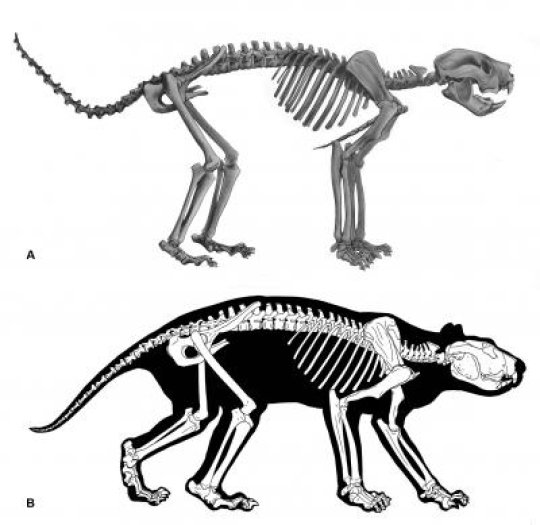
Thylacoleo carnifex reconstructions. (A) Reconstruction of the skeleton of T. carnifex. (B) Body outline based on examination of musculature evident in x-ray imaging of marsupials Vogelnest and Allen. Credit: Wells et al., 2018

Top UNSW Researchers Named Superstars Of STEM For 2019
December 11, 2018: by Lucy Carroll, UNSW
UNSW 2019 Superstars of STEM: Dr Beena Ahmed, Dr Bianca Capra and Dr Kalinda Griffiths.
Three leading UNSW academics, aerospace engineer Dr Bianca Capra, medical data researcher Dr Kalinda Griffiths and electrical engineer Dr Beena Ahmed are among 60 scientists and technologists to be named Superstars of STEM for 2019 by Science & Technology Australia.
The national program, which launched last year, aims at smashing stereotypes of women in science and creating a new generation of role models for young women and girls.
Minister for Industry, Science and Technology, the Hon Karen Andrews MP, named the Superstars of STEM today, following selection of some of Australia’s most inspiring scientists, technologists and educators.
Over the next three years the program will boost the public visibility of women in science, technology, engineering and mathematics (STEM) disciplines, with the successful recipients undergoing a year of training and support before they actively engage with their communities, school children and the media in 2020.
Professor Emma Johnston AO, President of Science & Technology Australia and Dean of Science at UNSW, said the women will no longer hide their scientific superpowers, and would share them with as many Australians as possible following the launch.
“Each Superstar will connect with hundreds of school children; feature in local, national and international media; and serve as a representative for their work, their discipline and their sector,” Professor Johnston said.
“We are extremely proud to have seen hundreds of capable, skilled, confident women apply for the program, and really look forward to sharing the stories of these impressive 60 Superstars with the world.”
The UNSW academics said successful, enthusiastic and passionate female STEM role models have a strong influence on young women, but many find it difficult to name prominent Australian women working in STEM.
“I get to work in all these areas and am passionate about promoting my industry,” said Dr Capra.
“Unfortunately, we are living in a time when a lot of young women and girls do not consider a career in STEM, let alone aerospace engineering. They are opting out of such careers early in their education, limiting the diversity, insight and lived experience required for scientific advances.
“If we want to address the cultural and societal biases that continue to limit the engagement of women with STEM, it is imperative we address the lack of gender parity in our high-profile STEM role models,” she added.
Dr Capra’s work as an aerospace engineer involves training and inspiring future generations of innovative engineers. She specialises in high speed atmospheric and interplanetary flight and generating practical solutions to reduce the energy use of our built environment.
Dr Kalinda Griffiths, a Yawuru woman and Scientia Fellow at the Centre for Big Data Research at UNSW Medicine, said the program will enable her to draw attention the power of big data and discuss major issues of data governance in Aboriginal and Torres Strait Islander health and research.
Dr Griffith’s work empirically measures complex health disparities in populations through existing data, with a focus on cancer. She is one of the first Indigenous women recognised in the Superstars of STEM program.
“I think scientists and researchers who are passionate and are able to discuss their achievements can inspire an entire generation of girls entering into STEM. This requires exposure, which is why the Superstars of STEM program is so critical,” Dr Griffiths said.
“The Superstars of STEM program means visibility, promotion and exposure to extraordinary women and women of colour who are working in a range of STEM fields.”
Dr Griffiths uses big data to better understand why some populations are heathier than others. Her major research areas include Aboriginal and Torres Strait Islander data governance, the identification of Indigenous peoples in official statistics across the globe and treatment and outcomes of Aboriginal and Torres Strait Islander people with cancer.
Dr Beena Ahmed, a senior lecturer at UNSW Engineering's School of Electrical Engineering and Telecommunications, said it is not only important to attract girls to the field of engineering but recognising the mentorship needed to make them stay.
Dr Ahmed has been an adviser for Women in Engineering student groups and developed mentorship and leadership development programs. She has also created a design-based engineering outreach activities to attract female high school students to the field.
Dr Ahmed's research area focuses on the intersection of health and technology, applying machine learning algorithms on data to improve our lives, such as recognising risk of dementia or insomnia, how to improve speech therapy or language learning exercises correctly and how to regulate stress levels.
Launched in 2017, Superstars of STEM will equip 150 female scientists and technologists with advanced communications skills and provide them with genuine opportunities to use these skills – in the media, on the stage and in speaking with decision makers.

Fighting Obesity: Could It Be As Plain As Dirt?
Depression: New Tool Delivers Swifter Picture Of Cognitive Deficit
Tiny Australian Wallaby The Last Living Link To Extinct Giant Kangaroos
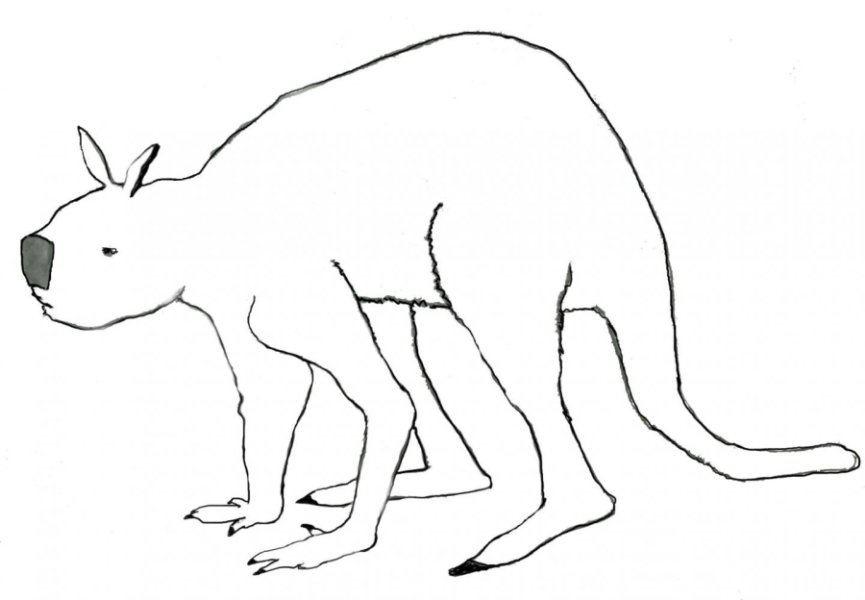
- DNA was sequenced from inner ear bones (petrous bones) of a 45,000-year-old giant short-faced kangaroo, Simosthenurus occidentalis, part of the Sthenurinae sub-family, found at Mt Cripps in Tasmania
- These are the longest DNA sequences ever recovered from Australia's extinct megafauna, with more than 16,000 base pairs of mtDNA, which is used to help understand evolutionary relationships
- The results support an evolutionary link between giant short-faced kangaroos (Sthenurinae) and the threatened banded hare-wallaby, Lagostrophus fasciatus
- The study also combined the DNA evidence with fossil and anatomical data to trace body size change over the evolutionary history of kangaroos and wallabies
- The macropod ancestors diverged from tree-living possums around 41 to 46 million years ago
- They remained small, in the 2-15 kg range, while Australia was more dominated by rainforest
- As the climate cooled and dried, and as the forests opened up over the past 10 million years, at least four different kangaroo lineages independently evolved to megafaunal size (more than 44 kg)
- This includes the short-faced kangaroos, the giant Protemnodon wallabies, and the living red and grey kangaroos.
Disclaimer: These articles are not intended to provide medical advice, diagnosis or treatment. Views expressed here do not necessarily reflect those of Pittwater Online News or its staff.